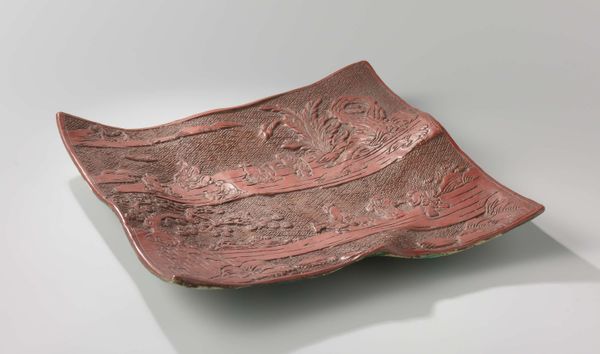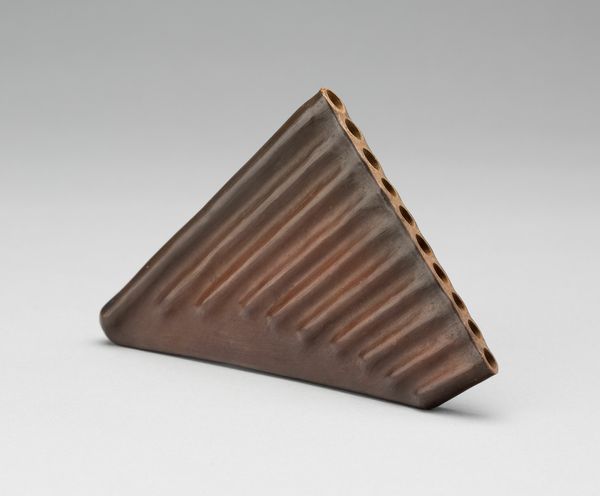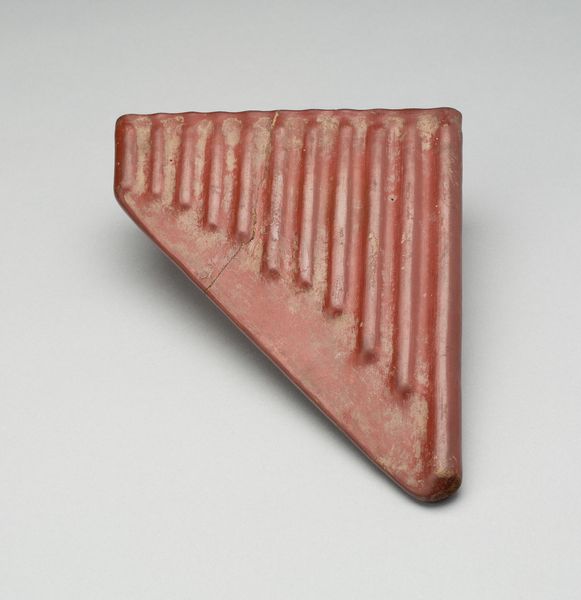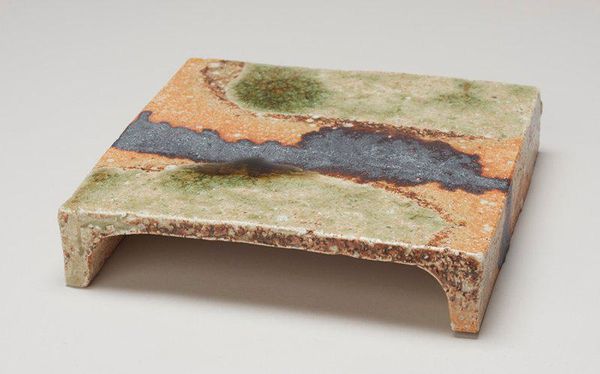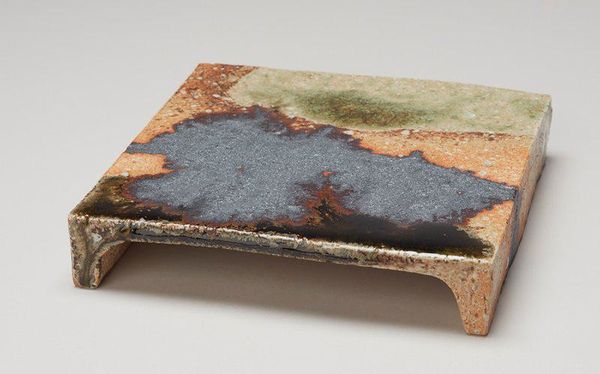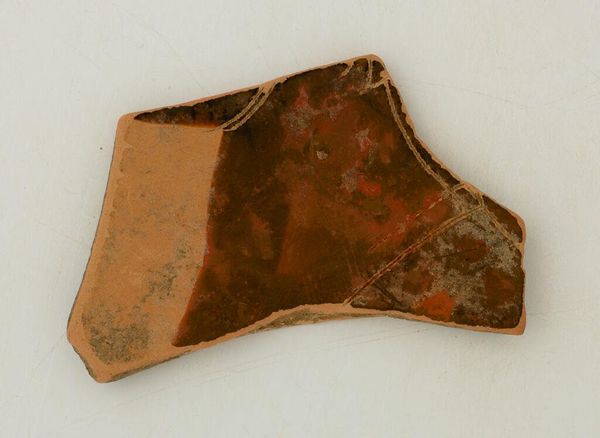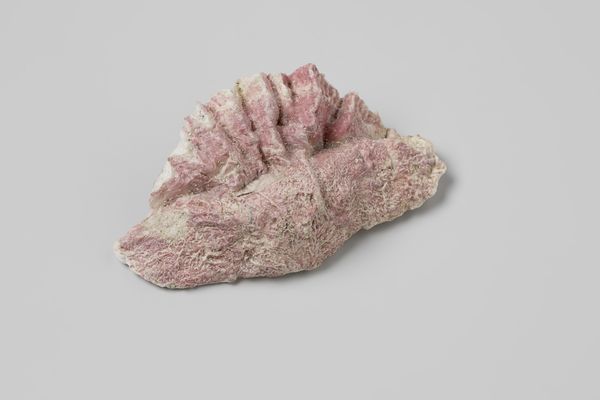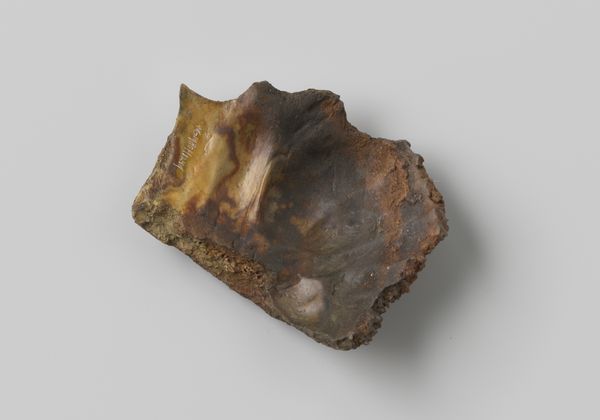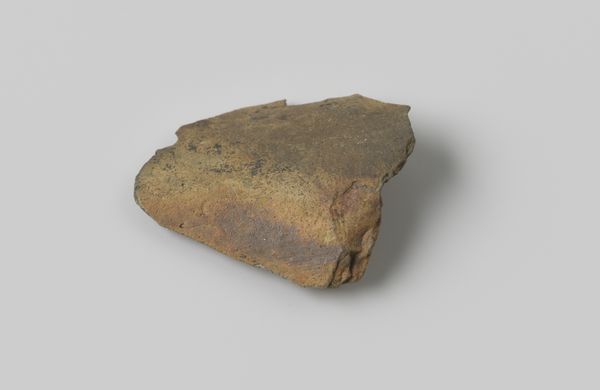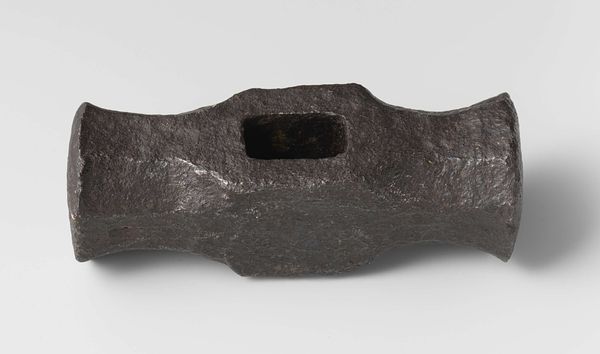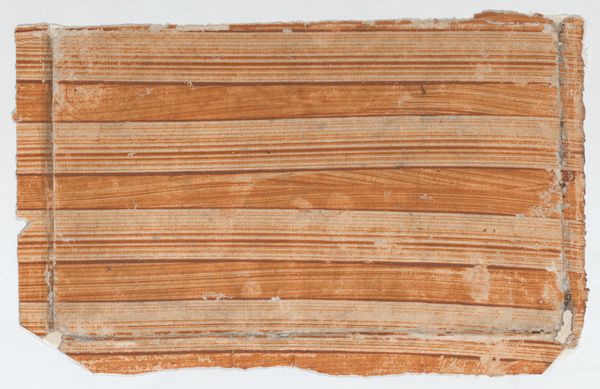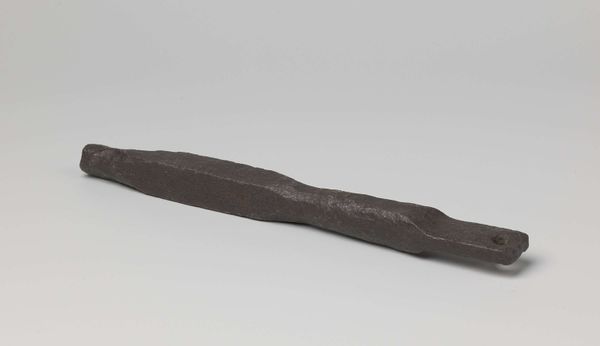
ceramic, terracotta
#
sculpture
#
ceramic
#
terracotta
#
indigenous-americas
Dimensions: 17.5 × 11.1 cm (6 7/8 × 4 3/8 in.)
Copyright: Public Domain
Curator: Oh, isn’t this just gorgeous? It has such presence. Editor: Indeed! What you're observing is a ceramic panpipe fragment created by the Nazca people sometime between 180 and 500 AD. It's part of the Art Institute of Chicago's collection. My first thought is that it’s less a fragment and more a foundation—for sonic and social structures. Curator: Oh, I love that—foundation! Because the material feels so raw, earthy even. But at the same time, there is this elegant triangular shape with carefully crafted vertical grooves—evidence of precision and an appreciation of music in this culture. Editor: Exactly. When we view it as a foundation, we acknowledge the active role of indigenous peoples in constructing sophisticated artistic forms and cosmologies that often predate and resist colonial narratives. The very act of creating this instrument signifies agency, a creative assertion against societal constraints. Curator: Music as resistance! That's beautiful. And let’s not forget that these pipes weren't just beautiful objects; they were used. What stories they could tell! Do we know what kinds of melodies they were playing? Editor: Archeological records indicate the pipes could produce a range of tones, but the melodies themselves are lost. Music, after all, is ephemeral, felt. What remains is the physical embodiment of its possibility and the context of its creation. The choice of terracotta, for instance, grounds the music in the earth, linking it to the cycles of nature and the rhythms of daily life. Curator: That's interesting. The idea of being grounded feels key, given how disorienting ancient cultures can feel for us moderns. I also wonder, did these melodies function as a sonic thread, weaving communities together? Editor: I think it’s highly plausible to understand it that way—that art acts as a kind of cultural glue. So yes, music through these panpipes could reinforce societal bonds, transmit cultural narratives, or create communal experiences. It also served a function of challenging social norms, a creative outlet for dissent and perhaps even the seeds for transformation. Curator: What a powerful thought! It goes far beyond the surface of the red-brown clay, doesn't it? Thanks, that really opened up a new way of thinking about these pipes for me. Editor: And for me as well! Appreciating this "fragment" reveals layers of historical depth, of indigenous knowledge, of the profound ways in which art shapes, and shakes, our world.
Comments
No comments
Be the first to comment and join the conversation on the ultimate creative platform.
